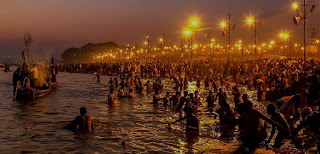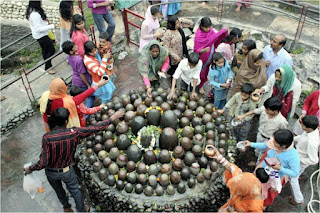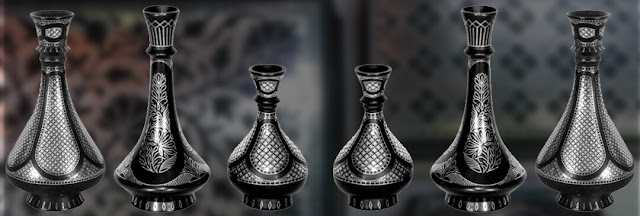Everyone loves music but have
different ways to enjoy it. Either listening to the song, humming the tunes or
playing the instruments. Each one has it’s own choice in linking oneself to
music. Some of those folks are the ones who actually play an instrument or
compose music. It could be as a hobby or as a career choice. This allows them
to be a step closer to music. There are hundreds of different kinds of
instruments people can learn to play though. Being able to play your favorite
instrument has many advantages. Some use it as a pastime, others do this out of
passion for music, and for some it’s kinda stress buster or meditation.
Millions of people all over the world play all kinds of instruments as a way to
express themselves. Others simply do it for entertainment, fun or to earn
money. But out of so many, which ones are the most popular instruments that are
easy to play? This list shows the top 15 most popular and easiest out of all of
them.
1.
Keyboard
Keyboards, the electronic piano, are
extremely versatile and very low maintenance. Electronic keyboards are capable
of recreating a wide range of instrument sounds and synthesizer tones with less
complex sound synthesis.They are popular with younger children and are great
for recording and changing performance. The main difference between a keyboard
and a piano is that the sound is produced electronically and of course it is
portable.
Electronic keyboards are usually
designed for home users, beginners and other non-professional users. As with
learning all musical instruments, learning to play the keyboard has the same
benefits as learning to play the piano. As well as developing their
concentration, memory and focus skills it will enhance their fine motor skills.
2.
Piano
The piano, in particular, has been
an unparalleled outlet for those seeking escape, creative expression, and
simply fun and joy. The modern piano has 36 black and 52 white keys, making a
total of 88 keys and is played using a keyboard. The piano was first invented
around 1700 and is used for many types of music including classical, jazz,
traditional and popular. Often thought of as the best musical instrument to
begin playing it is highly versatile, has a wide-range and a grand ability to
change dynamics.
Playing the piano is a workout all
its own, and offers different physical and physiological advantages to players
of all ages. Children will develop concentration, perseverance and emotional
expression. It will also enhance their fine motor skills and concentration
whilst improving memory and focus. It is also a very calming and relaxing
musical instrument to learn. Playing piano has also been shown to be a great
source of stress relief, and provides ample opportunities to bolster
self-esteem.
3.
Recorder
Recorder is the perfect first wind
instrument to start with. Because it is cheap however, it seems to be treated
as a “cheap” alternative to a “real” instrument (such as the flute). They have
a very interesting history because their development was stopped for centuries
and only resumed in the twentieth century. For starters, the recorder is a
great instrument that is played by everyone from the absolute beginner up to
conservatory-trained professionals. A more common benefit that one doesn’t
necessarily require a super-skilled teacher to learn how to coordinate their
fingers, their tongue and their breath — all 3 things at once — in order to
play any tunes to a reasonable standard.
4.
Classical Guitar
The guitar is a string instrument
with anything from four to eighteen strings with a normal guitar having six
strings. The sound is projected acoustically and it is typically played by
strumming (or plucking) the strings with one hand and fretting the strings with
the other hand. Learning to play the guitar is great for confidence building
and developing social skills. As with most musical instruments, learning to
play the guitar enhances fine motor skills in children as well as improving
their concentration, memory and focus skills.Learning and practicing Guitar,
greatly broadens and improves technique, increase knowledge of music theory and
helps memorize the entire neck as individual notes and not patterns.
5.
Drum set
Drums are percussion instruments and
are the oldest form of instruments, existing in a wide variety of shapes and
sizes. They are naturally played by being struck with different tools known as
beaters; anything from wooden sticks to wire brushes to bare hands. Some drums
are tunable whilst others are non-tunable. Drums produce sounds by the
vibration of a stretched membrane known as the head. The head covers either one
or both ends of a hollow body which is known as the shell. Playing drums can
relieve frustration, disappointment, and stress. Learning drums challenges you
to break complex tasks into manageable parts. Drumming is interactive. It’s
about timing and coordination, both of which forces the drummer to be in the
present moment.
6.
Electric Guitar
The electric guitar is a string
instrument. Invented in 1931 the electric guitar is basically a guitar that
uses a pick-up to convert the vibration of its strings — which are typically
made of metal, and which occurs when a guitarist strums, plucks or finger-picks
the strings — into electrical impulses. The electric guitar usually has 6
strings but can sometimes have up to 12 strings.electric guitars are a little
easier to play than acoustic guitars. The strings are a bit lighter, the neck
is a bit thinner, and for hands that aren’t used to fretting chords that makes
things more comfortable. That’s good, because when new players struggle with
the mechanics of playing they are more likely to quit. Going with a guitar
that’s easier on the hands removes one of the barriers that prevent newbies
from advancing on the instrument.
Most new guitar players haven’t
chosen their musical direct yet. It takes some time to figure out what you
really love, and what you’re really good at. An electric instrument gives you
the freedom to explore those choices. You may find you love strumming chords or
playing classical music finger-style and you’ll eventually switch to acoustic
guitar. You may decide you love jazz, or metal or country music. You can play
all of that on an electric guitar while you sort everything out. Even if you
think you know what you want when you are first starting out, you may be
surprised by the doors that open up to you as you learn the instrument. An
electric guitar gives you a greater amount of freedom to explore it all.
7.
Violin
The violin is a string instrument
and is the smallest and highest-pitched instrument in its family. Typically,
the violin has four strings and is usually played by drawing a bow across its
strings. Violins are important musical instruments in a wide variety of musical
genres including jazz, country, metal and folk music.For aspiring musicians,
learning to play the violin is at the top of many bucket lists, and for good
reason.Learning to play the violin has great benefits including improving
coordination, concentration and discipline.
Playing the violin requires
impeccable posture, more than almost any other musical instrument.It takes
strength and balance to hold your body and your violin in the proper position
for extended periods of time.Playing the violin also requires incredible
strength in the upper arm and shoulder muscles. In fact, playing the violin is
comparable to an upper body workout you’d normally perform at the gym! Playing
the violin improves your physical strength, hand-eye coordination, and
dexterity and makes the violinists ultimate multi-taskers.
8.
Percussion
A percussion instrument is a musical
instrument that is sounded by being struck or scraped by a beater; struck,
scraped or rubbed by hand; or struck against another similar instrument. In
almost every style of music, percussion plays a pivotal role. In more recent
popular music culture, it is almost impossible to name three or four rock,
hip-hop, rap, funk or even soul charts or songs that do not have some sort of
percussive beat keeping the tune in time. The act of playing a percussion
instrument gives both the mind and body tons of benefits. Playing percussion
instruments assists both kids and adults with their coordination and motor
skills.
9.
Bass Guitar
The bass guitar is a stringed
instrument similar in appearance and construction to an electric guitar, but
with a longer neck and scale length, and four to six strings. The bass guitar
is a transposing instrument, played primarily with the fingers or thumb, by
plucking, slapping, popping, strumming, tapping, thumping, or picking with a
plectrum. It is often a solo instrument in jazz, jazz fusion, Latin, funk,
progressive rock and other rock and metal styles. Learning to play the bass
every much as challenging as learning how to play the six string guitar. If
you’re unsure about your musical abilities, the bass guitar is the perfect
instrument to get started with. With a regular guitar, players often have to
memorize long chords. On a bass guitar, however, you can play more songs with
just single notes. This makes it easier for new players.
The job of the bass player is to
provide the rhythmic impulse by working hand and glove with the drummer. Double
bass musicians are readily sought-out to perform in a professional capacity. If
you plan to pursue a career as a professional musician, talented bassists have
a leg up because they can adapt their playing style to match almost any musical
genre. A bass guitar player usually has a much easier time finding work than a
guitar player.Moreover, playing bass guitar or any other musical instrument
produces a special kind of pleasure which affects your life positively. It is
beneficial to your social life, personal life, health, mental ability and other
areas of your life.
10.
Saxophone
The saxophone is closely related to
the clarinet and is a woodwind instrument. They are typically made of brass and
played with a mouthpiece, much like that of the clarinet. Invented by Adolphe
Sax in 1840, the saxophone is most commonly used in classical music, marching
and military bands and jazz.The saxophone has always featured in people’s lists
when deciding upon an instrument to learn due to its “cool” image. Playing any
musical instrument allows you express your creative side, but the saxophone is
particularly good for this due to its wide range of dynamics and flexible
sound, allowing you to convey many emotions and styles.
In total there are 9 different types
of saxophone, but the most popular 4 are the Soprano, Alto, Tenor, and Baritone
saxes. So whether you are tall or short, or enjoy playing the melody or
bassline parts in bands there is a saxophone for you.Saxophone playing improves
your aural skill and can find the difference between a various range of sounds.
And this favors in developing language proficiency.Also, it contributes in
identifying logical patterns which help in math and science.
11.
Flute
The flute belongs to the woodwind
family and produces its sound from the flow of air across an opening. The pitch
of the sound is changed when the player opens or closes the various holes in
its body. Beginners’ flutes are often made from nickel or silver-plated brass
whilst professionals use solid silver, gold and sometimes even platinum flutes.
Wooden flutes produce a dark sound whereas silver flutes produce a brighter
sound.
Woodwind instruments are easier to
learn than string instruments or keyboard because pupils can make progress
quicker on them and are able to learn three notes in the first lesson. It is a
versatile instrument and is used in classical, jazz and modern band ensembles.Playing
the flute is relaxing, improves co-ordination, concentration and
self-discipline.
12.
Cello
The cello is a bowed stringed
orchestral instrument that is versatile with a rich voice. A member of the
violin family, cellos are most closely associated with European classical
music. The cello is normally made from wood and the top and back are
traditionally hand-carved. One of the most incredible things about the cello is
that it can become every string instrument in the orchestra. Cellos can be
almost unrecognizable in certain parts, their sound being easily transformed.
The process of learning the cello is
not difficult, but it’s important to keep in mind that the cello is not an
instrument of instant gratification. It does require focused, daily practice
time and a good teacher to guide you along the way. Cello will come more easily
to someone with experience reading notes and rhythms.Music education,
especially one that involves learning a string instrument like the cello, is an
excellent example of comprehensive learning.Playing the cello encourages both
teamwork and leadership skills and teaches general music knowledge. It is a
great instrument for confidence building whilst improving concentration and
focus.
13.
Clarinet
Clarinet actually means ‘little
trumpet’ and belongs to a family of woodwind instruments. It is played using a
single-reed mouthpiece and its cylindrical shape is mainly responsible for the
clarinet’s distinctive musical notes. The tone quality can vary greatly with
the musician, the music, the instrument, the mouthpiece, and the reed. The
clarinet is an easy instrument for beginners to learn. Although high-level
players will easily recognize how difficult it is to get things like dynamics,
tone and tuning correct, if you are a beginner that sticks to maybe a
two-octave range then the clarinet is incredibly forgiving. From a relaxed and
open inhalation to a controlled and precise exhale, both brass and woodwind
instruments can give your lungs a great respiratory workout.
14.
Trumpet
The trumpet group contains the
instruments with the highest register in the brass family. Music is created
from small gusts of air that are blown strategically into the trumpet in order
to cause vibrations inside the tube. It takes a great deal of skill, breathing
techniques and personal strength to know how and when to blow precisely the
right amount of air into the tube to create different notes and different
tones. Improving these types of skills can only be acquired through the right
kind of proper trumpet training and practice with a qualified instructor In
some ways, the trumpet is easy to play. In other ways, it can be argued that it
is the most difficult of instruments. On the easy side, it has only three
valves; but some of the highest and most difficult notes to perform on the
trumpet require tremendous air pressure in the lungs.
15.
Harp
The harp is a stringed musical
instrument that has a number of individual strings running at an angle to its
soundboard; the strings are plucked with the fingers. In terms of size, many smaller
harps can be played on the lap, whereas larger harps are quite heavy and rest
on the floor.Unlike wind and bowed string instruments, the harp sounds great
from day one and it is relatively easy to play simple and satisfying pieces
after only a few lessons. However, the harp is a difficult instrument to play
to a high standard. A floor harp (one that sits on the floor) is a better
choice for the beginners than a lap harp for a beginner, because having to
balance or hold the harp in some way can interfere with learning proper playing
technique. The harp comes in different sizes and there is a variety of music to
fit your personal taste on both lever or pedal harps.



































